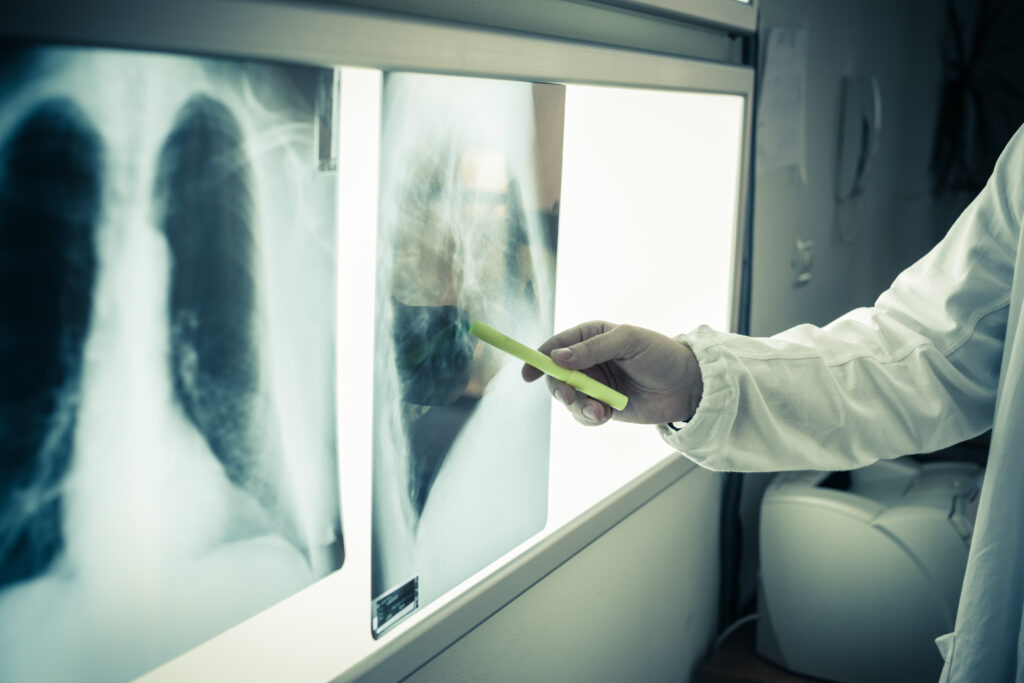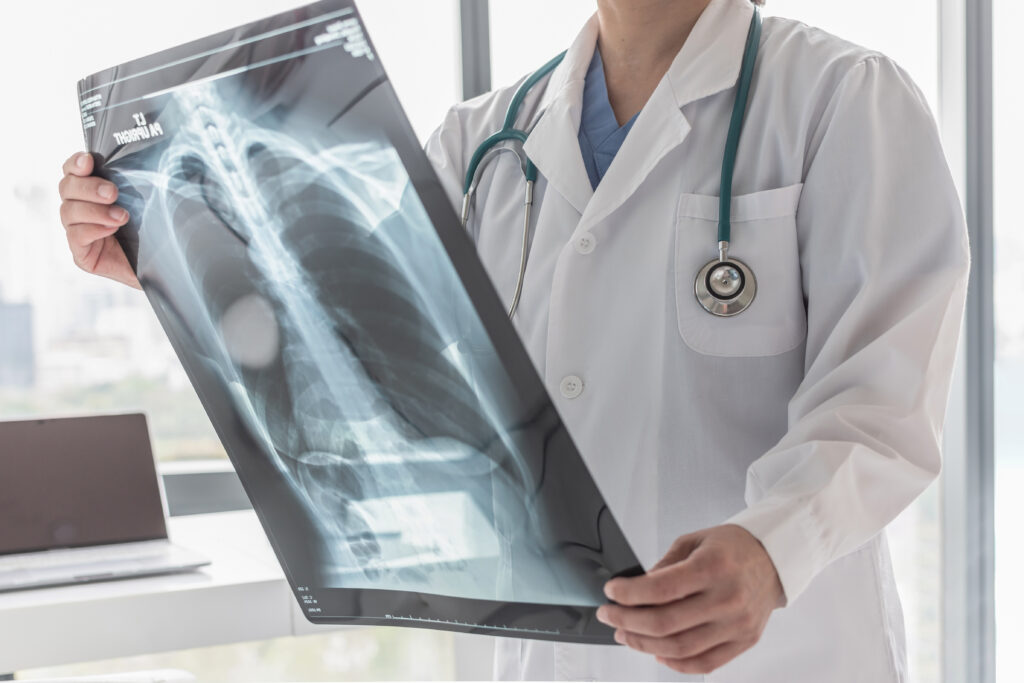Currently, 1 in 16 people in the U.S. can expect to receive a lung cancer diagnosis. That’s 1 out of every 15 men and 1 out of every 17 women. If everyone currently eligible were screened, close to 48,000 lives could be saved.

Lung cancer develops when abnormal cells grow uncontrollably in the lung tissues, forming a mass or tumor. Often, this is due to exposure of dangerous chemicals that we breathe. Lung cancer may not cause noticeable symptoms in its early stages. By the time symptoms develop, the cancer may have already advanced, making it more difficult to treat effectively. Screening can detect lung cancer at an earlier stage when it is more likely to be treatable.
The American Lung Association’s “State of Lung Cancer” report explores how lung cancer varies by state. It does this by analyzing key lung cancer indicators including incidence, survival, stage at diagnosis, surgical treatment, lack of treatment, and screening rates. While Oklahoma is making many impactful changes to improve the rates of lung cancer diagnosed in the state, it still has a long way to go. Oklahoma ranked below average on the rate of new lung cancer cases diagnosed each year, early diagnosis, and lack of treatment in 2022.
Oklahoma Lung Cancer Rates
New cases (per 100,000)
- The rate of new lung cancer cases in Oklahoma is 66 and significantly higher than the national rate of 57. It ranks 41st among all states.
Screening
- In Oklahoma, 2% of those at high risk were screened, which was significantly lower than the national rate of 6%. It ranks 45th among all states, placing it in the bottom tier.
Prevention
- Tobacco use is the leading risk factor for lung cancer.
- The smoking rate in Oklahoma is 19% and significantly higher than the national rate of 14%. It ranks 44th among all states.
5-Year Survival Rate
- The percent of people still alive five years after being diagnosed with lung cancer (the survival rate) in Oklahoma is 20%, which is significantly lower than the national rate of 25%. It ranks 46th among the 45 states with survival data, placing it in the bottom tier.
Stage at Diagnosis
- In Oklahoma, 22% of cases are caught at an early stage, which is significantly lower than the national rate of 26%. It ranks 47th among the 49 states with data on diagnosis at an early stage, placing it in the below-average tier.
- The greatest racial and ethnic disparity in early diagnosis is among Black Americans – The early diagnosis rate is 15.4% among Black Americans in Oklahoma, significantly lower than the rate of 19.7% among Black Americans nationally, and significantly lower than the rate of 20.2% among whites in Oklahoma.
Lack of Treatment
- Oklahoma ranked 41st (out of the 49 states with available data) with 23% of cases receiving no treatment. This is significantly higher than the national rate of 21% and puts Oklahoma in the below-average tier. Over the last five years, the percent of cases receiving no treatment in Oklahoma did not change significantly.

Lung cancer screening is key to early diagnosis, and early diagnosis saves lives. Unfortunately, here in Oklahoma, not enough people are getting this lifesaving screening.
Oklahoma Proton Center offers lung cancer screening via low-dose CT scans with a new state-of-the-art Siemens CT Scanner that provides optimal image quality for detecting even the hardest to see issues. Low-dose CT screening is a test used to detect lung cancer before any symptoms appear. Under the new lung cancer screening guidelines, those ages 50-80 who have a 20-pack-year smoking history or who have quit smoking in the past 15 years should get screened for lung cancer.
Others recommended to consider screening include individuals who have a prior history of radiation treatment, a history of exposure to cancer causing chemicals, and firefighters. A clinician from Oklahoma Proton Center can speak with you if you have questions about eligibility for screening.
If you have concerns about lung cancer or any symptoms that might be related to it, it is essential to seek medical attention promptly. Early detection and timely treatment are crucial for improving outcomes in lung cancer patients. Regular health check-ups, especially for individuals at high risk, can aid in the early detection of lung cancer.
REFERENCES
- Cancer Facts & Figures 2023. American Cancer Society. Released January 2023. Accessed January 13, 2023.
- Siegal DA, et al. Proportion of never smokers among men and women with lung cancer in 7 US states. JAMA Oncol.2021 Feb 1; 7(2): 302-304. doi: 10.1001/jamaoncol.2020.6362.
- Centers for Disease Control and Prevention. National Center for Health Statistics. CDC WONDER On-line Database, compiled from Compressed Mortality File 1999-2014 Series 20 No. 2T, 2016.
- Cancer Statistics: NIH National Cancer Institute Surveillance, Epidemiology, and End Results. Updated April 19, 2023.
- Estimates of Funding for Various Research, Condition, and Disease Categories (RCDC). National Institutes of Health. Table published May 16, 2022. Accessed January 13, 2023.
- American Lung Association. State of Lung Data. Accessed July 22, 2023.
